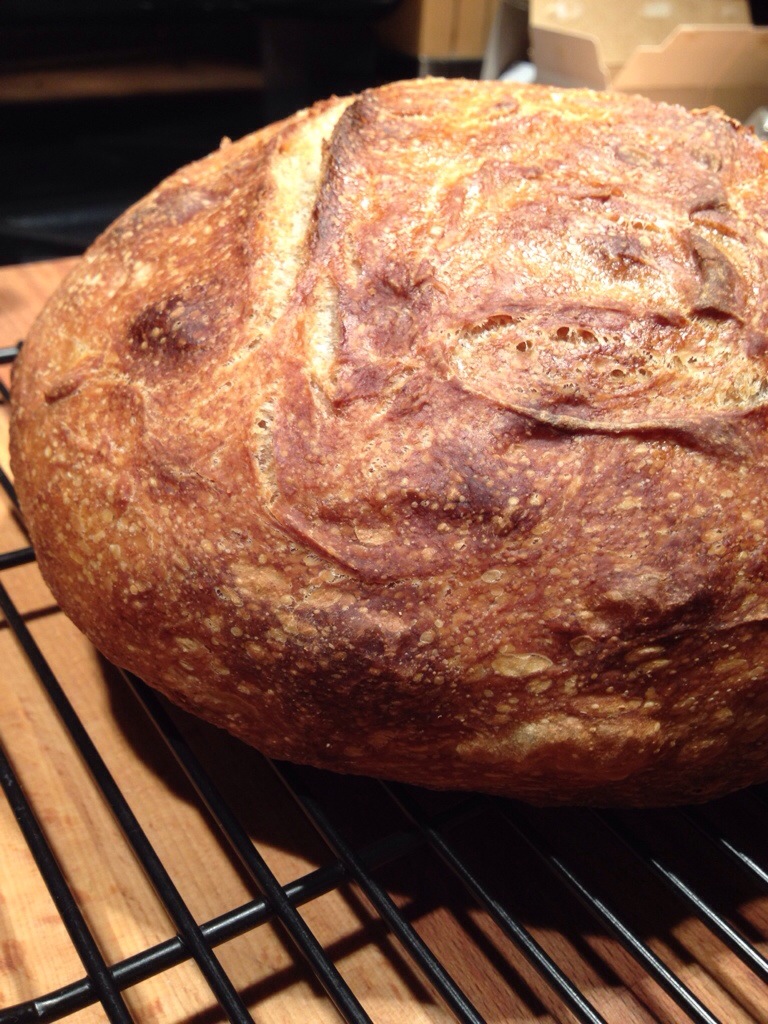I’ve been baking bread.
Not a shocker, coming from a guy who works at a bakery—one that specializes in bread—for the last 10 months, and who ran a restaurant magazine for the decade previous to that.
But, like most people, I’ve never had occasion to bake much bread at home. And, let’s be honest, there are two big reasons for people to not bake bread at home:
1. We’re fortunate to live in a time when it’s relatively easy to find pretty good bread. Good quality baguettes or other “artisanal” (I’ve grown to loath the word) specialties can be found fresh-baked at grocery stores, and neighborhood bakeries with bonafide specialists in the kitchen have also enjoyed a resurgence. And, in the age of the co-op, one can find breads from various bakeries, including wholesalers like the company I work for (Saint Agnes Baking Co.), which specializes in sourdoughs. Flash freezing and packaging technology has also made it possible to transport and store good bread that isn’t laced with preservatives a good distance from where it was baked, and the rise of par-baked product give consumers the pleasure of of baking without the assembly part.
2. Baking bread at home is time consuming and requires space.
The latter point is shorter in length than the first, but no less important. With all due respect to my friends that love to bake, they all have kitchens that can accommodate. Even those that adhere to “easy” bread techniques like “no-knead” and its “Artisan Bread in Five Minutes A Day” offspring, one needs space on the counter and, in the latter’s case, a big hole in the fridge to make it all work according to the “five minutes a day” mantra (not including the rise, proof and bake times).
If you’re like me, with a tube of a kitchen in a 1923 urban home and an average fridge, space is a problem. And I can buy really good bread (or sneak out with a loaf from where I work).
Time is also an issue (and I can hear my baker friends groan).
Technology has helped immensely to impact that “time” factor—with fast-acting yeast, for example, we are no longer dependent on natural leavens such as sourdough cultures to inflate our doughs. And in industrial baking, add to that the introduction of the climate-controlled proof box, which can reduce proofing time to under 60 minutes from what could be an hours-long process.
Lost in those time-saving advancement, however, is true fermentation time. lengthy fermentation provides the opportunity for a “natural” rise from the yeast in a starter and adds to flavor. And, as we are learning, long fermentation time adds nutrition by breaking down the components in wheat (especially whole wheat) flour and making them easy for our digestive system to process.
But the reason I began baking regularly at home goes beyond professional interests. I’m intrigued. To learn about bread is to step beyond the current foodie fascinations and learn about history. To travel the path of bread is to travel across the planet, back to the dawn of civilization and agriculture, through poverty and wealth, from hands to machines.
And, I might save a little money—in the near term once I get my system down and in the long term with better health.
So there you have it. I’ve got my sourdough starter in the fridge, a mixture of bread, dark rye and whole wheat flours, and I’ve stumbled into a routine to where its entirely predictable—the goal when you want to bake at home. And the results have been solid, and getting better. It ain’t hard. If I can do it, dear reader, you can, too.

